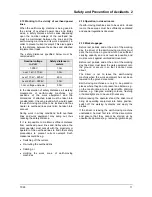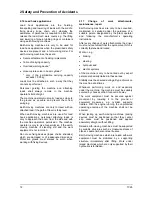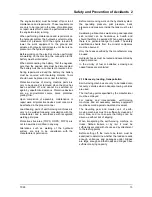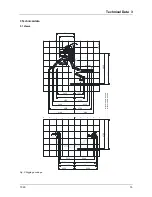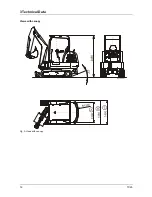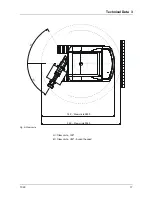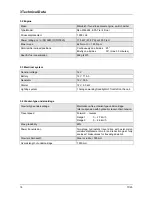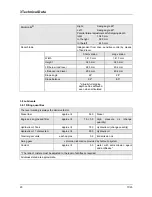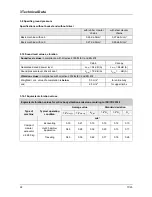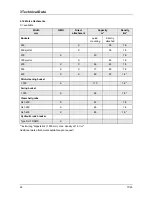
2 Safety and Prevention of Accidents
TC29
12
2.16 Load hook applications
Load hook applications are the hoisting,
transporting and lowering of loads with the aid of a
fixing device (rope, chain, etc.), whereby the
assistance of personnel is required to attach and
release the load. Such work covers e.g. the lifting
and lowering of pipes, tubbing rings or containers
using earth-moving machines.
Earth-moving machines are only to be used for
load hook applications when the prescribed safety
devices are present and in full working order. For
earth-moving machines, these are:
•
Secure attachment of loading implements
•
Table of carrying capacity
•
Overload warning device *
•
Hose-rupture valve in boom cylinder *
* only if the permissible carrying capacity
exceeds 1,000 kg
Loads must be attached in such a way that they
cannot slip or fall out.
Personnel guiding the machine and attaching
loads shall always remain in the machine
operator’s field of sight.
The machine operator must carry loads as close to
the ground as possible and prevent them from
swinging.
Earth-moving machines are only to travel with an
attached load if the path of travel is fairly level.
When earth-moving machines are used for load
hook applications, personnel attaching loads is
only to approach the boom from the side and with
the machine operator’s permission. The machine
operator is only to give his permission if the earth-
moving machine is standing still and the work
equipment is not in motion.
Do not use fixing devices (ropes, chains, shackles)
which are damaged or of inadequate dimensions.
Protective gloves must always be worn when
working with fixing devices.
2.17 Change of work attachments,
maintenance, repair
Earth-moving machines are only to be converted,
maintained or serviced under the guidance of a
suitable person designated by the plant operator
and following the manufacturer’s operating
instructions.
After every change of work attachments, the driver
must convince himself that the quick-mount hitch is
correctly fastened and locked.
Work on e.g.
•
braking
•
steering
•
hydraulic and
•
electric systems
of the machine is only to be carried out by expert
personnel specially trained in these areas.
Stability must be ensured during all type of work on
the machine at all times.
Whenever performing work on and especially
under the machine, the machine must be suitably
secured by chocks so that it cannot roll away.
The work equipment must be secured against
movement by lowering it to the ground or
equivalent measures, e.g. cylinder supports,
trestles. With the engine running, the unprotected
operating envelope of the machine shall not be
entered.
When jacking up earth-moving machines, jacking
devices must be positioned so that they cannot
slip. Jacks must be positioned and applied
absolutely straight, without tilting.
Raised earth-moving machines must be supported
by suitable structures such as crosswise stacks of
planks, square timbers or steel trusses.
Earth-moving machines which are raised with work
equipment must be stabilized by a supporting
structure immediately after lifting. Work under
raised machines which are only supported by their
hydraulics is forbidden.
Содержание TC29
Страница 6: ...Table of Contents TC29...
Страница 22: ...3 Technical Data TC29 16 Views with canopy Fig 5 Views with canopy...
Страница 34: ...3 Technical Data TC29 28...
Страница 90: ...8 Operating Problems TC29 84...
Страница 94: ...9 Appendix TC29 88...














